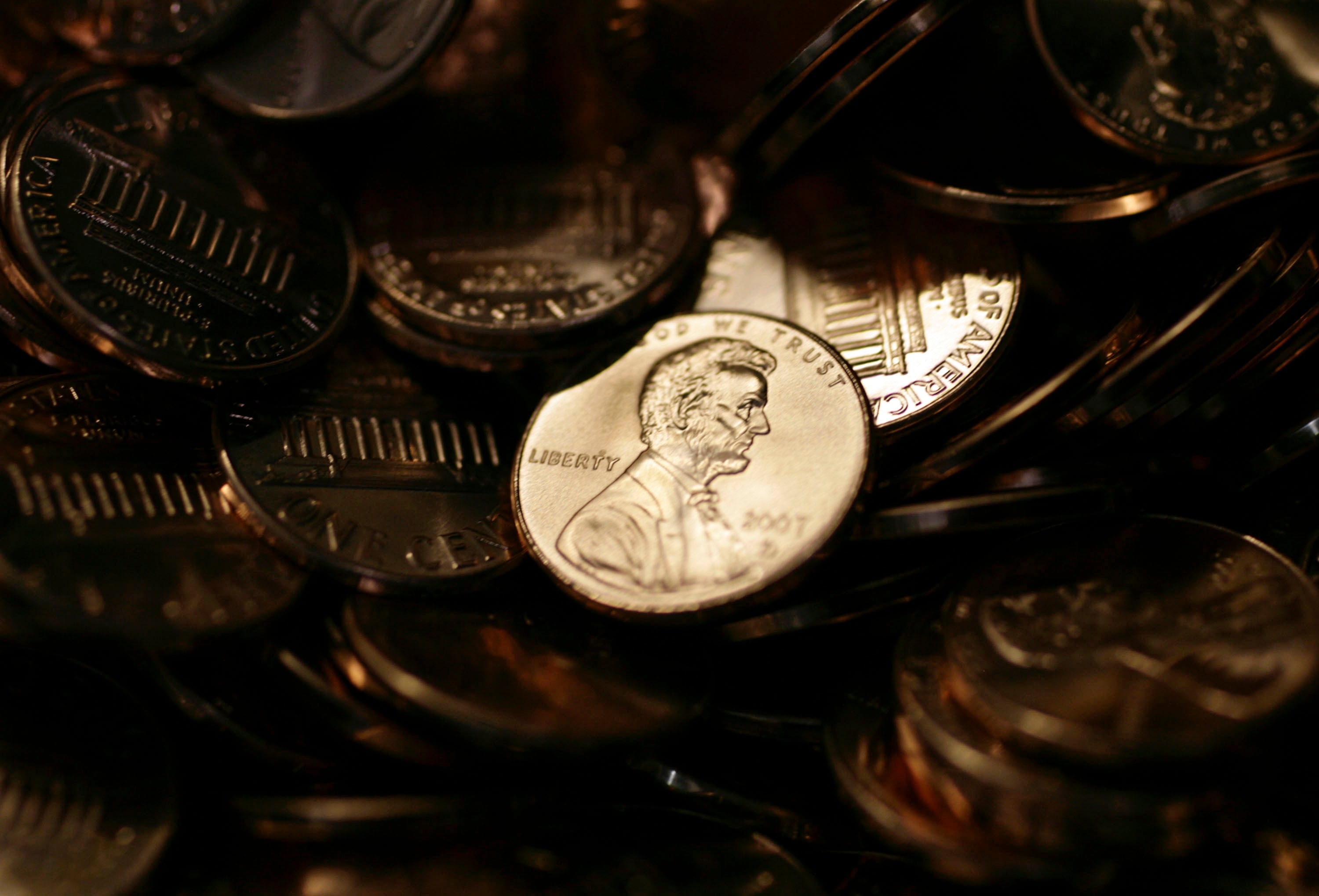RICHMOND, Va. (AP) — The lowly penny, the forgotten mainstay of coin jars and car cupholders everywhere, may soon be no more.
President Donald Trump announced Sunday he’s ordered his administration to cease production of the 1-cent coin, whose buying power is long past its prime.
Advocates for ditching the penny cite its high production cost — currently almost 4 cents per penny, according to the U.S. Mint — and limited utility. Fans of the penny cite its usefulness in charity drives and relative bargain in production costs compared with the nickel, which costs almost 14 cents to mint.
Trump’s surprise order comes after decades of unsuccessful efforts to pitch the penny.
“Only tradition explains our stubborn attachment to the penny. But sometimes traditions get ridiculous,” the Farmers’ Almanac said in its 1989 edition.
Here’s a look at some questions surrounding Trump’s order.
Can Trump really order the Treasury to stop minting pennies without Congress' approval?
Yes, according to legal scholar Laurence H. Tribe, the Carl M. Loeb University Professor of Constitutional Law Emeritus at Harvard University.
U.S. code gives the Treasury Secretary the authority to mint and issue coins “in amounts the secretary decides are necessary to meet the needs of the United States.”
If Treasury Secretary Scott Bessent decides the amount necessary for the penny is zero, he’s within his legal rights, Tribe said.
“Unlike a lot of what the new administration has been doing pursuant to the flood of executive orders since Jan. 20, this action seems to me entirely lawful and fully constitutional,” Tribe said, referring to the aggressive executive action Trump’s taken on other issues since taking office.
Congress, which dictates currency specifications like the size and metal content of coins, could make Trump’s order permanent through law. But past congressional efforts to ditch the penny have failed.
Pennies are mostly made of zinc, and the American zinc lobby has been a major opponent to suggestions that the penny be eliminated.
How many pennies are in circulation?
It depends on what you mean by circulation.
Pennies are the most popular coin made by the U.S. Mint, which reported making 3.2 billion of them last year. That’s more than half of all the new coins it made last year.
MIT professor Jeff Gore, who founded Citizens to Retire the Penny, said coins are supposed to stay in circulation for about 30 years and that in the last three decades the U.S. Mint has made about 250 billion pennies.
But, he says, “because nobody wants to use pennies, they fall out of active circulation much faster than other coins.”
If pennies sit in drawer for a decade, Gore asks, “Does that qualify as being in circulation?”
Will Americans miss pennies?
The experience in other countries suggests no.
Canada started phasing out its penny a dozen years ago and urged store owners to round prices to the nearest nickel for cash transactions. Electronic purchases were still billed to the nearest cent. The move came after New Zealand, Australia, the Netherlands, and others dropped their lowest-denomination coins.
After dropping the penny or its equivalent, those countries have not looked back.
What comes next?
Trump's order, which he announced in a social media post as he was departing New Orleans after watching the first half of the Super Bowl, was the latest in his administration's rapid-fire efforts to cut government costs.
“Let’s rip the waste out of our great nation's budget, even if it’s a penny at a time,” Trump wrote in his post, which was light on details about plans for a post-penny future.
After Canada stopped minting new pennies, it began recycling them for their “valuable” copper and zinc, according to a 2022 report from the Canadian Mint.









